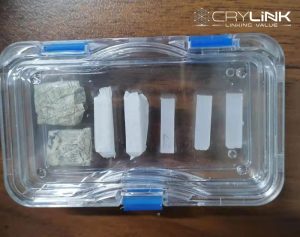Er:YAG lasers can be used in laser aided cataract surgery but owing to its water absorbable nature Nd:YAG is preferred more. Erbium YAG dental lasers are effective for removing tooth decay atraumatically,[citation needed] often without the need for local anesthetic to numb the tooth. Eliminating the vibration of the dental drill removes the risk of causing microfractures in the tooth. When used initially at low power settings, the laser energy has a sedative effect on the nerve, resulting in the ability to subsequently increase the power without creating the sensation of pain in the tooth. Additional benefits are disinfection of the surface of the dentin and enamel prior to bonding the filling, and etching the surface to increase surface area for improved bonding adhesion. Lasers currently available for cutaneous resurfacing include a high-energy pulsed or scanned carbon dioxide laser, a short-pulsed erbium:yttrium-aluminum-garnet (Er:YAG),and modulated (short-and-long-pulsed) Er:YAG systems. High-energy pulsed or scanned carbon dioxide laser skin resurfacing can achieve excellent clinical improvement of photodamage, rhytides, and atrophic scars. The Er:YAG laser is a powerful tool in the cosmetic surgeon’s armamentarium that can have beneficial effects when used properly for the correct indication. Mild-to-moderate photo-induced rhytides, superficial pigmentation, atrophic scars, and a variety of epidermal and dermal lesions can be treated successfully with the Er:YAG laser.
- Products
- Applications
- Support
Cooperation
- Company
Others
- Blog
- Contact Us







